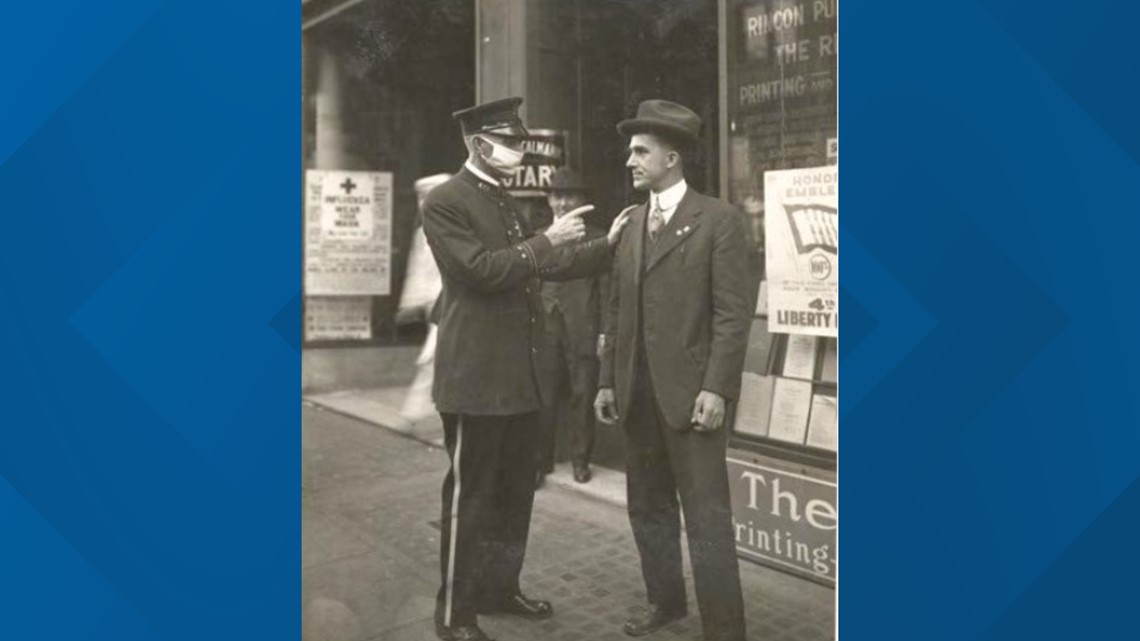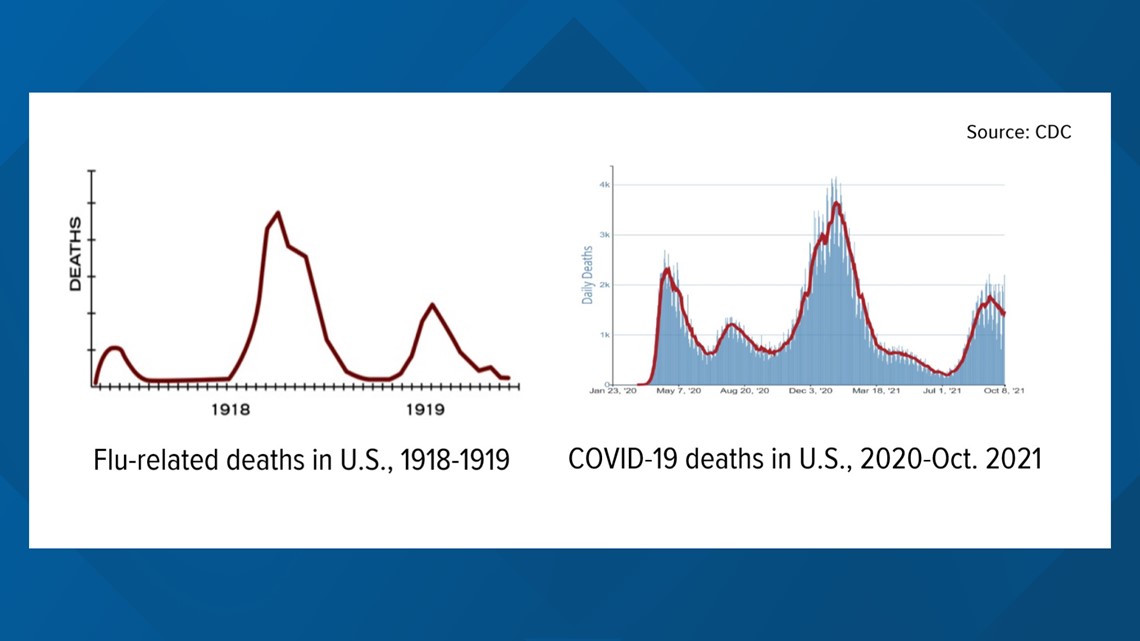CHARLOTTE, N.C. — From public masking, to the push for better ventilation, to the movement of group indoor activities to the outdoors, some of the images from the 1918 flu pandemic are eerily similar to the COVID-19 pandemic. Perhaps unsurprisingly, some of the pitfalls seen more than a century ago persist today.
'There's a dynamic with pandemics that goes back centuries'
Dr. Jonathan Quick teaches global health studies at Duke's Global Health Institute and has poured his study of centuries of infectious diseases into his book The End of Epidemics: The Looming Threat to Humanity and How to Stop It, which was first published in 2018, before the emergence of COVID-19. He was also former Director of Essential Drugs and Medicines Policies at the World Health Organization.
Quick sees many similarities between how the flu and coronavirus pandemics have played out, but also some stark and dangerous differences.
"There's a dynamic with pandemics that goes back centuries: blame, conspiracy, misinformation," Quick said. "With the pandemic in 1918, the Spanish got blamed, and each nationality blamed another nationality or another group. So, that’s always been there."
Quick notes, while 1918 had its share of deadly misinformation, today, it can spread a lot farther and more rapidly than before, thanks to social media. So can important public health guidance.
"We can get the good solid public health messages out," Quick said, pointing out one of the benefits of social media today. "So, it is a double-edged sword, but we need to fight really, really hard against the misinformation and the deadly misinformation."


Other similarities, he says, come from lessons from the 1918 pandemic that the U.S. has failed to heed in the present fight against COVID-19, allowing the concerns to play out all over again. Quick states that World War I drew much of the attention and resources away from the flu, leaving the federal government largely absent from the pandemic response and cities across the U.S. on their own to devise their own, separate responses.
"No federal resources were used in 1918, and the president never said anything about the pandemic," Quick said. "As a result of that, we had cities across the nation doing things differently. What we learned then, from studies of hundreds of cities, is that those cities that started sooner, with more measures – staggering the trollies, closing schools, avoiding big events... and kept them in place longer had half the pandemic death rate as those cities that were on-and-off with their measures."


While the federal government is much more involved in the COVID-19 response today, states, and even counties and cities within those states, have had varying degrees of lockdowns, re-openings and vaccination campaigns, and thus, variations in infection rate, hospital impacts, and vaccination rates.
"We haven't learned the lessons from 100 years ago, in terms of the importance of being consistent and keeping measures in place until we've really gotten things under control," Quick said.


'This is a much more treacherous virus'
With the U.S. death toll from the COVID-19 pandemic recently matching, and then, overtaking that from the 1918 flu, some have tried to draw similarities between the flu pandemic and the COVID-19 pandemic, but Quick warns, some context is needed.
The Centers for Disease Control and Prevention reports more than 711,000 virus-related deaths, so far, including about 30,000 in the Carolinas. The 1918 flu killed about 675,000 Americans, the CDC reports.
By the raw numbers, COVID-19 is the deadliest pandemic to hit U.S. soil. However, Quick reminds that the U.S. population was much smaller than today -- some estimates show it was less than one-third of what it is now.
"In absolute terms, (COVID-19) is more, but in relative terms, it's less because of modern medical care and hospitalization, and now, the impact of vaccination," Quick said.
Quick also says comparisons between the epidemic curves of the two pandemics show surface-level similarities, but a deeper dive points to important differences. While overall, the death curves show three main waves, that of the flu pandemic was spread out from Spring of 1918 to Summer of 1919, a little more than a year. The COVID-19 pandemic is now stretching into its second year.
"This is a much more treacherous virus than the 1918 flu," Quick said, noting that the predominant strain of COVID-19, delta, spreads much quicker and the world is much more connected nowadays.


"The world was not nearly as connected 100 years ago. So, we're infinitely more connected, we're more urbanized," Quick said. "We also have had enough outbreaks in different places that we have potential to continue generating new viruses."
'The cost of sitting back is just huge'
He warns, because of those factors, COVID-19 is not set to burn out as easily as the 1918 flu did, and that more work is needed.
"If we wait for everybody to get infected before we vaccinate the world, we're going to burn through a whole lot of human lives," Quick said. "The cost of that, not just in human terms, in terms of lives, but in economic terms, of disrupted lives and livelihoods and futures, the cost of sitting back is just huge, and it'll catch up with all of us."
Quick thinks it is likely that some people alive today will live to see another pandemic, citing global interconnectedness.
"We're entering a century of pandemics," Quick said. "What I hope is that people remember this moment. Remember what you've been through the last 18 months: how many plans have been dashed, how many promises have been broken, how many weddings have been deferred, how many funerals you've been a part of... how many friends or colleagues have lost jobs, how many kids have been knocked behind."
"Make sure our leaders keep investing in things that public health people and scientists know will keep us far safer from future ones," Quick said.
Contact Vanessa Ruffes at vruffes@wcnc.com and follow her on Facebook, Twitter and Instagram.

